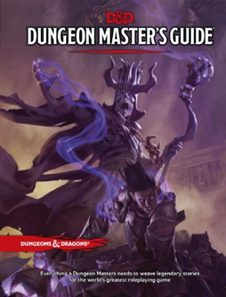 It’s a staple of fantasy adventures. The adventurers are in a crowded marketplace when they hear a scream, and they see goblins pouring from the sewers. They need to fight!
It’s a staple of fantasy adventures. The adventurers are in a crowded marketplace when they hear a scream, and they see goblins pouring from the sewers. They need to fight!
At this point, what happen to the crowd? And how do you represent that in game?
The standard answer for me and many other DMs is not great: we simply have the crowd mysteriously escape. We run a combat between the adventurers and the goblins, and the non-combatants are simply ignored. There are some good reasons why we do this. Primary amongst them is that keeping track of multiple, independent characters is very hard. It’s difficult enough to do when they’re actively interacting with the characters. Working out what a NPC is doing while a combat is going one when they’re not just attacking like everyone else? That’s difficult.
Then there’s the problem that your average commoner doesn’t have statistics that make them interesting in combat. If a goblin attacks a commoner, any successful attack will see the commoner unconscious or dead.
Given that, is it possible to make these combats in public places more interesting? Yes, it is. But it typically requires a little forethought and preparation. The solution I lean towards is creating a few “vignettes” – small one- or two-round encounters or situations that play out as the main combat progresses. They need to be important enough for the players to want to interact with them; if the players feel that they’re getting closer to victory by interacting both with the vignettes and the main fight, then thing are going well.
The other side of this is that the main force of the opposition can’t be so dangerous that the players would be foolish to split up; if dealing with a side force means that the remaining adventurers are slaughtered by the main force, then you’ve got a problem. Keep the situations manageable.
It is vitally important to describe the situations so that the players can make informed decisions about which to tackle. You don’t want the descriptions to go overlong – most players can only deal with a limited amount of information at one time – so you need to be short and to the point. Remember the film The Two Towers? How would you describe this guy?

You want the players to notice him and send someone to deal with him. “You see an orc running towards the tunnel” isn’t enough information. “You see an orc running towards the tunnel with a big flaming torch” makes him stand out a lot more – especially if you then remind the players of the explosives in the tunnel!
Of course, most vignettes won’t be so important. However, consider the following possibilities:
- You see two children hiding behind a wagon; three goblins are moving towards them.
- There’s a burst of flame from a nearby stall; you realise that flames are moving towards a large stock of alchemist’s fire.
- A young woman is carried screaming into the air by a pair of winged kobolds.
- A heavy, abandoned cart starts rolling towards a group of townsfolk trapped in an alley.
- A sniper is moving on the rooftops, taking shots at children he can see.
Exactly how much you split the group is worth considering. DDAL4-04 The Marionette takes the vignette method of combat design to its logical extreme: lots of small situations are described, and it’s expected that each adventurer takes one to deal with. Is this what you want, or do you just want them as sidelights to the main fight?
Selecting vignettes to reinforce the actions of the crowd as the combat progresses is also good. Start with ones that rely on masses of people; run ones with stragglers towards the end. Give the feeling that time is passing and people outside the main combat are still acting.
It is important to consider which characters will be free to deal with the situation; it will typically be the skirmishers, ranged characters and arcane spell-casters, so designing vignettes they can deal with is advised. If the heavily-armoured fighters are engaged in melee, it’s very hard to find a situation that warrants them disengaging. Yes, you might make it important enough, but it isn’t going to be a good decision if they take opportunity attacks and lose offensive opportunities as they race to deal with another threat.
However, having the rogue of the group racing over rooftops to catch a sniper is something that is fun – as long as it only takes a round or two. D&D is a group game, and having one character stuck away from the others rarely is as enjoyable as everyone participating together.
Creating a library of vignettes, so that you can pull out ones as appropriate to give the feeling of the fight not being just about the PCs, is something worth aiming for. A few alterations will allow them to be reused, and create more interesting situations for your players to face: a more textured approach to combat.
